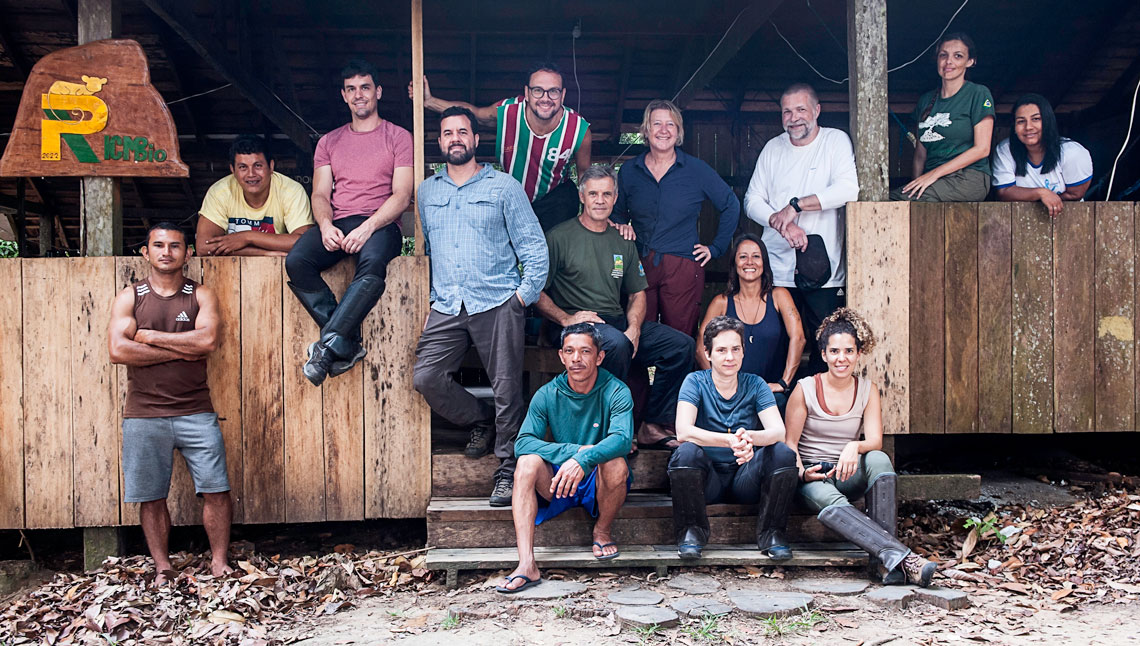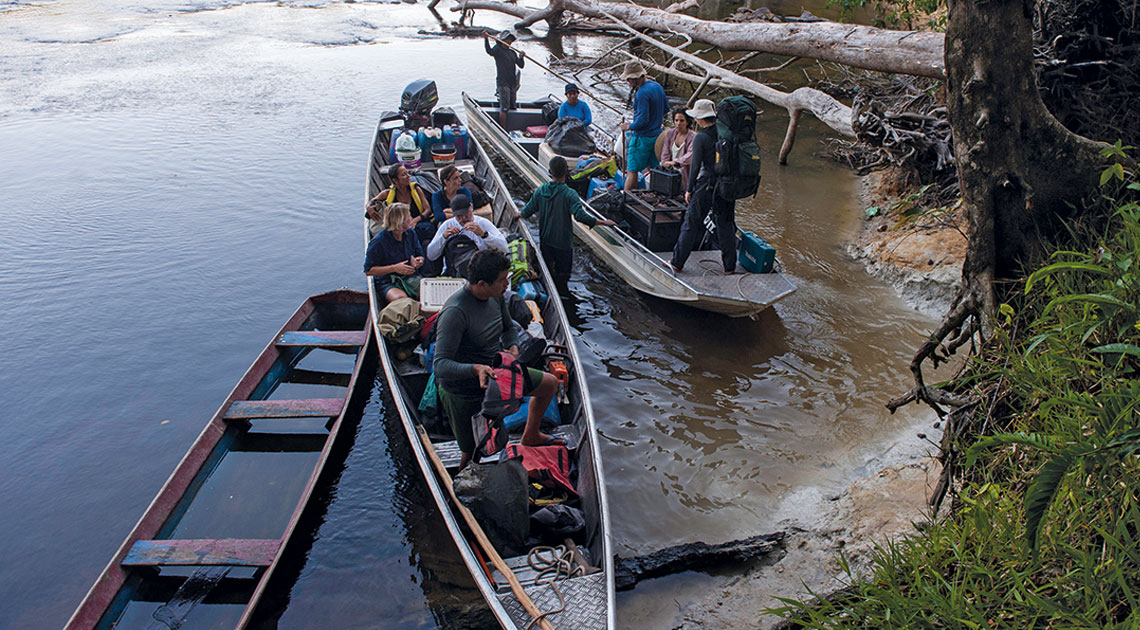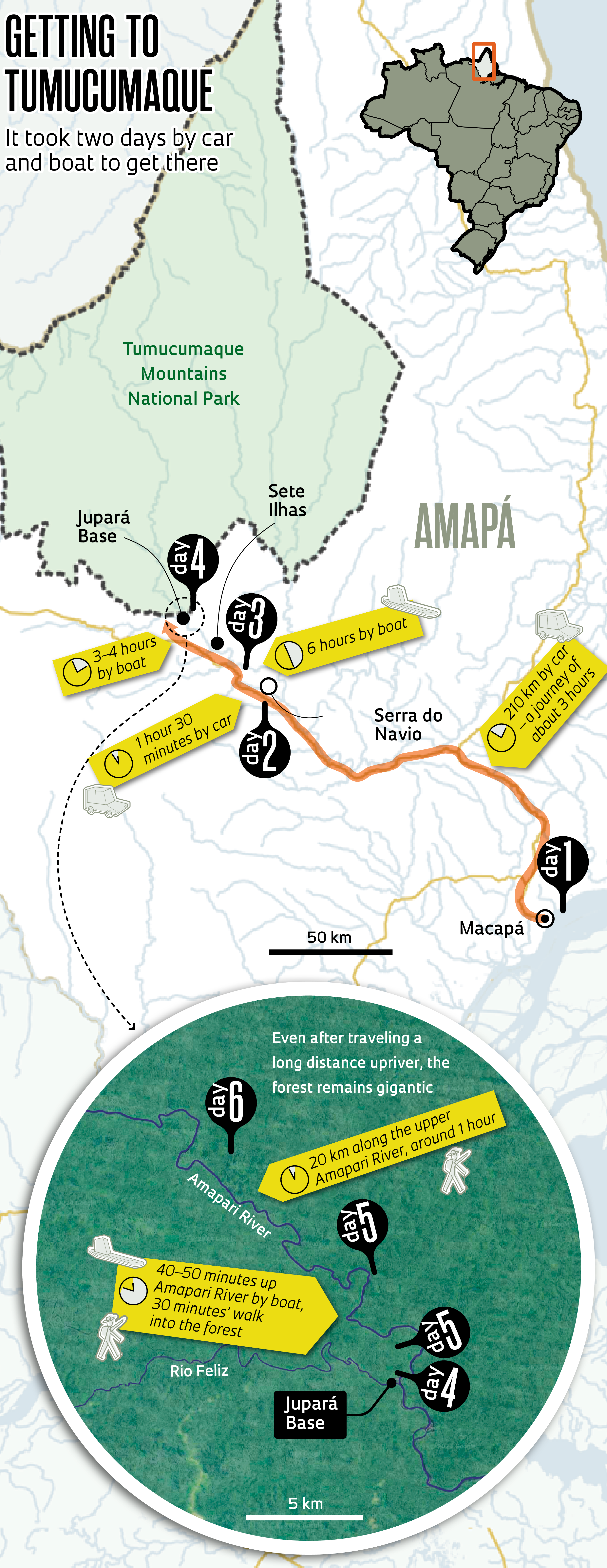Cover
The Tumucumaque Mountains National Park (PNMT) is isolated from urban areas, leaving the forest unaltered by human activity

The expedition team, and other visitors, at the entrance of the main cabin of the Jupará field base. From left to right, behind: Edmilson Brasil da Silva, Aldemir Palheta Nunes, Paulo Bittencourt, Rafael Oliveira, Léo Ramos Chaves, Cristoph Jaster, tourists Steffi Winkler, Jacqueline Calazans and Florian Winkler, ICMBio's environmental technician Ariane Barbosa and the cook Patricia Moraes. Sitting: Rubens da Silva Pedroso, Maria Guimarães and Danielle Ramos. Jupará (kinkajou) is an arboreal mammal common in the area, chosen by public polling to represent the base
Léo Ramos Chaves/Pesquisa Fapesp
Day 1, 10/27
Arrival in Macapá
The capital of Amapá is situated on the Equator, on the banks of the Amazon River
Day 2
Departure from Macapá
The Chico Mendes Institute for Biodiversity Conservation (ICMBio) base at the PNMT is in Serra do Navio, a municipality of around 5,000 inhabitants. Last point with cell phone signal
Day 3
Departure from Serra do Navio
With the Amapari River at a low water level due to the drought, the helmsmen and the cook went alone in two bass boats with the cargo. The boats need to travel light and navigate carefully
The other members of the expedition traveled by car until it was no longer possible
Departure from Sete Ilhas
The whole group—totaling 13 people—boarded the boats with our cargo, which included food and a stove. At one point along the river, one of the boats got stuck and had to be pushed loose by its passengers
We arrived at the Jupará base after nightfall. It was a great relief to set up the hammocks where we would all sleep
 Léo Ramos Chaves/Pesquisa Fapesp
Léo Ramos Chaves/Pesquisa FapespDay 4
Plot 1
In the area surrounding the base, the team identified eight enormous angelim–vermelhos, as well as other species. A prototype physiological monitor installed on a 60 m angelim-vermelho in 2019 was still there, but most of the data was corrupted
Day 5
Plot 2
Following the same trail as the previous day, the researchers measured and marked the location of nine more angelim-vermelhos
 Léo Ramos Chaves/Pesquisa Fapesp
Léo Ramos Chaves/Pesquisa FapespPlot 3
The big surprise was finding 17 angelim-vermelhos within a radius of 150 m, and on sloping terrain
Day 6
In search of the record holder
Bittencourt’s objective was to find the tallest tree ever seen by Jaster; a measurement taken by drone indicated that it was 80 m tall. The stature of the forest at this remote location made it clear that the gigantism near the park base was not an exception in the region, but the norm
Republish


